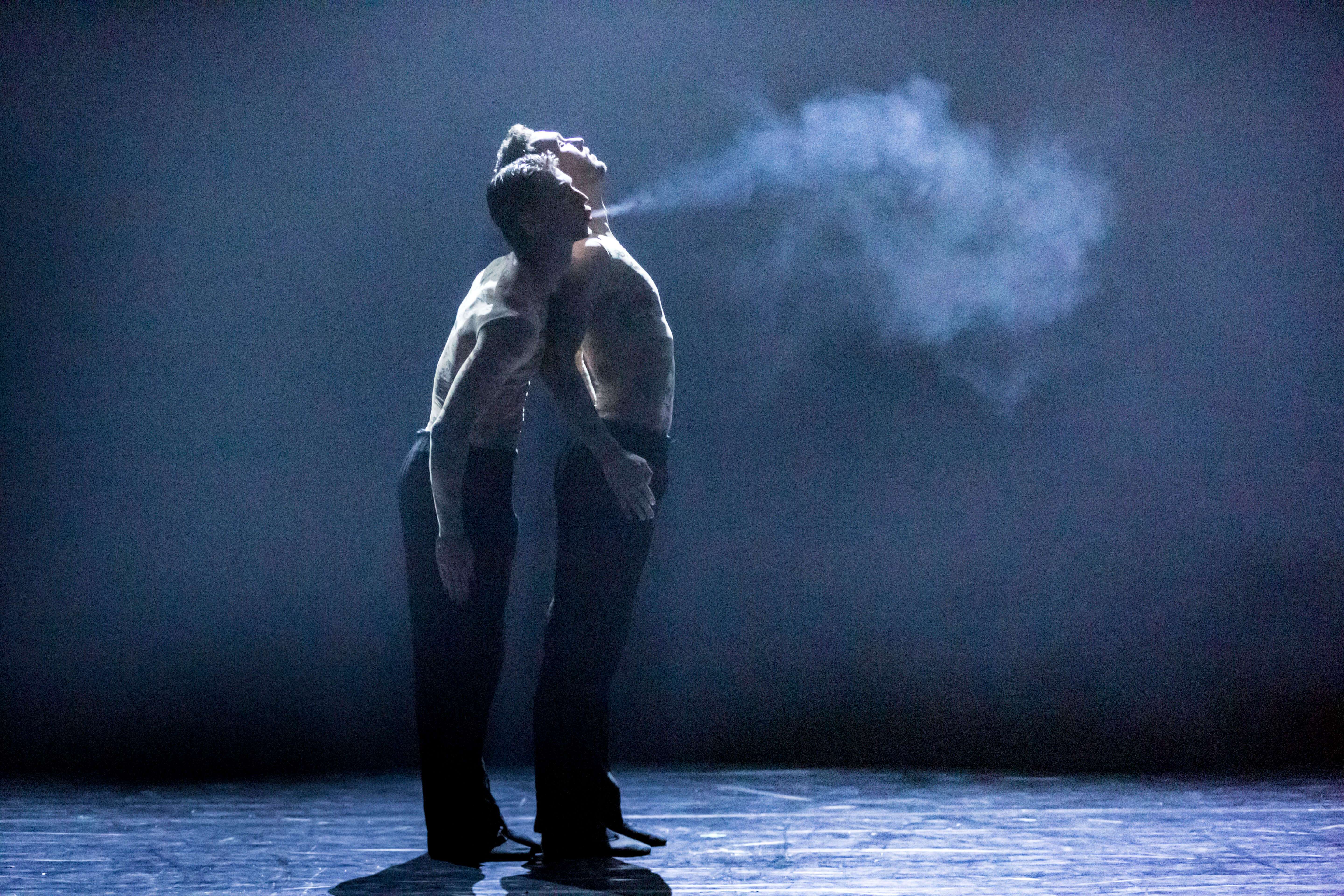LEGENDS | THIN SKIN/ LEGENDS
March 14, 2022
Dance review by Ruth Eshel, Dance Diaries
Two world-renowned choreographers, Marco Goecka from Germany, and Johan Inger from Sweden staged their works in the Kamea Dance Company which is operating in Be’er Sheva. Their willingness to do so is a credit to the company. Tamir Ginz, the artistic director, chose two completely different works, the first by Goecke which has a futuristic robotic quality, and in contrast Inger’s work immersed in the “everyday” of the seventies. The choice is successful and creates diversity. Both works were found in the repertoire of leading troupes in the world, praises were written about them, but here, I want to concentrate on the performance of the great dancers.
In “Thin Skin” the movement is sharp, fragmented, the energy is gathered and concentrated in the body, its intention is clear. The performance is excellent. Men and women in the same clothing, long black pants with the torso covered by a thin layer of transparent fabric with a delicate pattern, which looks like thin skin through which you can see the muscle work that serves the body. Throughout the work there is a recurring movement motif of waving palms that conjure up the mind, vibrating bird wings, which perhaps send out cries of “save” from the mechanical and alienated takeover of the contemporary world on the body.
The composition of the work is mainly based on a string of male solo dances. The first of them, performed by Sagi Beleli, who is of a super dancer with a projection that can penetrate every corner of the theater. The performance of the other men is also impressive. There is little female presence, and it seems that the creator is fascinated by the male ability, which is why it was so refreshing to watch the duet and trio with the participation of the excellent dancer Karlee Delvini-Donnelly, whose abilities were equal to the men. From time to time the stage is full of dancers in a short unison section, and I wanted to see more.
When the lighting changes, parts of the stage is filled with grayish smoke, an atmosphere of mystery is created that engulfs the dancers, and like a kind of temporary obstacle, the dancers need extra internal energy to radiate through it. The special movement language and the excellent performance, put this dance with those individual dances that are engraved in the memory.
While Marco’s dance deals with the pain felt in the contemporary/futuristic world, Johan’s piece “Rain Dogs” takes us back to the seventies, perhaps to New York City. These are the years of the “everyday” movement that is reflected in the design of the costumes, the gender freedom, the ability to carry the transistor radio with you everywhere and let the body react, move and dance “as you please”. It is a theatrical dance built from scenes, to the overwhelming music of Tom Waits. Plenty of duets interwoven in the work, the movement flows, but it seems that the creator made careful movement choices, not to fall into the “expected” and routine movement. When the performance is excellent, and the dancers manage to find the movement quality of each character, it is a pleasure to watch this dance that reminds us that we are human.

